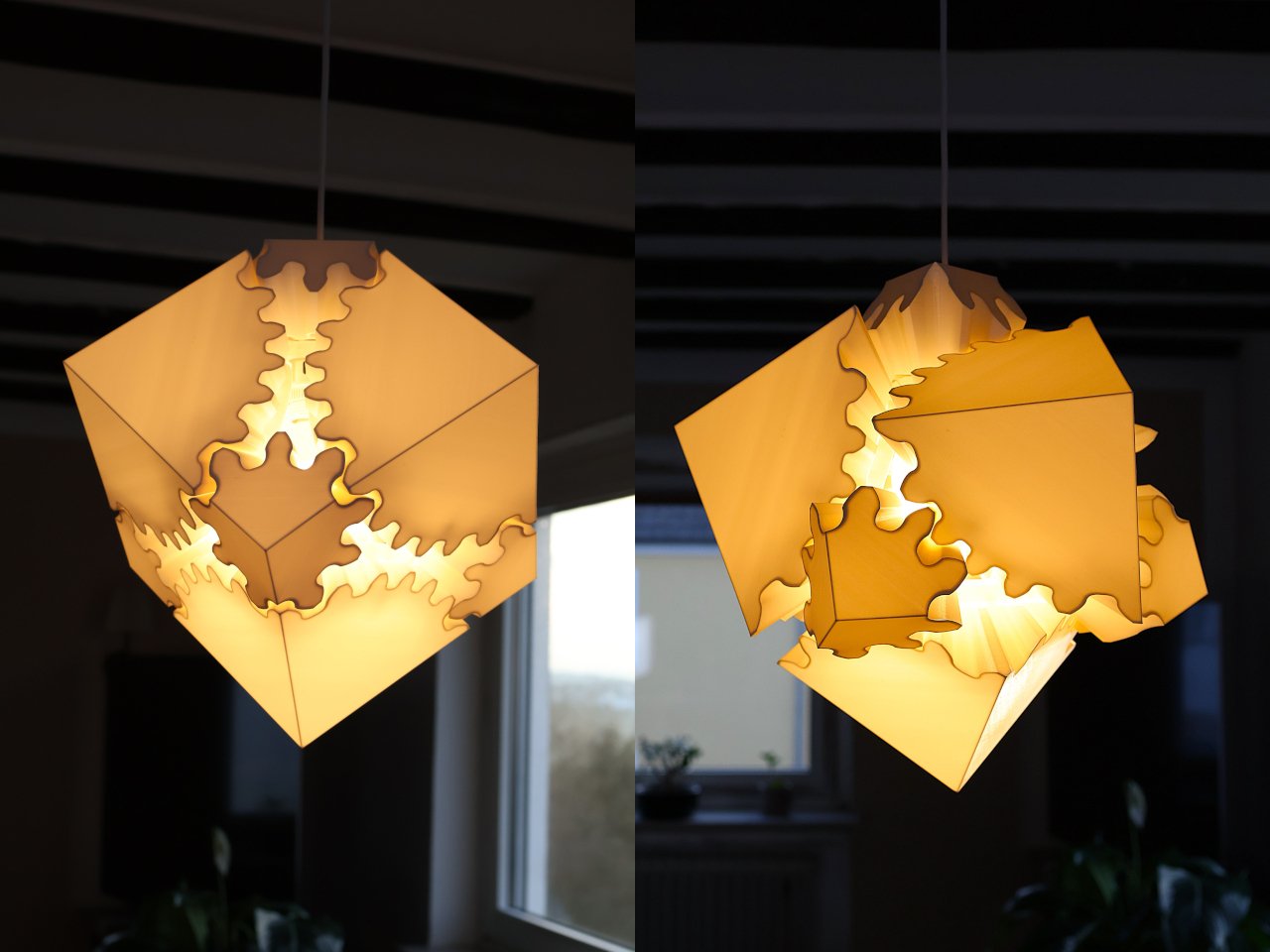Clockwork-inspired 3D printed Cube Lamp is part fidget toy
Except for the obviously portable kind, most lamps are designed to be left alone where you installed them, especially if they’re placed on walls or ceilings. Even desk lamps are rarely moved unless you’re redesigning your interior or replacing it with something else. You don’t even have any direct interaction with lamps these days, especially smart ones that you can either command with your voice or automate away completely.
In complete contrast, this lamp is almost designed to be played with. Yes, even for the variant that would hang from your ceiling. With a design that seems inspired by some fantasy clockwork contraption, this 3D printed Gear Cube Lamp brings more than just light but also an interactive experience that’s nothing short of a large fidget toy.
Designer: Ruven Bals
![]()
![]()
Playing with a lamp sounds a bit foolhardy. After all, there is heat as well as electricity involved. Even more worrisome if it’s a design that was just 3D printed and assembled on your own. And yet, that’s part of the adventure with this Gear Cube Lamp, which feels like a journey from start to finish, one that admittedly has a satisfying ending if you do reach the destination.
![]()
![]()
![]()
![]()
At first glance, the lamp looks simply like an elaborate cube with pieces whose internal edges are shaped like the tooth on a gear. Twist one corner, however, and all the other pieces turn in sync with each other. It’s reminiscent of the inner workings of a mechanical clock, or some steampunk contraption that threatens to unravel reality with each turn.
![]()
![]()
Making this elaborate interactive lamp is as much a puzzle as it is a work of art. You 3D print no less than 17 parts of different shapes and sizes, assembling them with the same precision as a model ship. You can opt to use a glueless construction, in which case you need to 3D print 24 additional connectors, or you can fall back to using glue when all else fails.
The end result might very well be worth all that effort, because you will have a lamp that is not only a light fixture but also, in some ways, a toy. The desk lamp variant definitely fits this better, as it can be within reach and easily lets you twist and turn the corners to get your mind wandering. At the very least, it’s an interesting decorative lamp whose form you can change every so often to add a bit of flavor to your space.
![]()
The post Clockwork-inspired 3D printed Cube Lamp is part fidget toy first appeared on Yanko Design.



